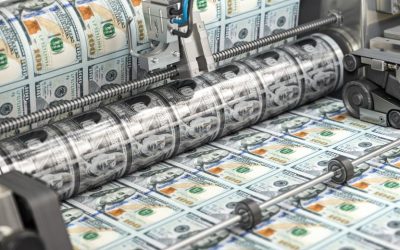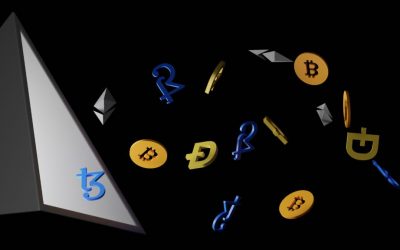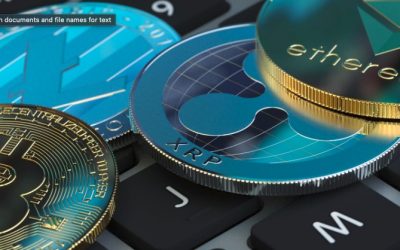“Paper Money is liable to be abused, has been, is, and forever will be abused, in every country in which it is permitted” – Thomas Jefferson
In the opening article on “What is Money” we explained that money has a long history and has come in different forms from the barter economy to the modern days. We explained money serves different functions as a medium of exchange, a unit of account and a store of value.
We also explained that money can mean different things to different people, depending a variety of factors on social and economic levels. For instance some countries may be largely digitalised (cashless) while others may be more prone to use cash in everyday transactions. Some small communities may still value the concept of barter and exchange in other means (other than currency) and in others still, money can be attributed to all sorts of things as may be the case in schools, playgrounds, prisons and so on.
There are countless properties that confer meaning and value to money. In this article we will break down the ones we deem most important for you to know and keep in mind.
Acceptability
Money needs to be recognisable and socially accepted in order for it to be adopted and used in everyday life. In traditional economies banknotes and coins backed by central banks and governments largely confer their legitimacy and acceptance as is the case with the Federal Reserve issuing and endorsing the legitimacy of the USD. Otherwise put, you want to be absolutely sure the money are using is largely trusted and accepted by your trading counterparties in order for it to be of any use.
Medium of Exchange
Money needs to be accepted as a method of payment and hence capable of serving the purpose of settling transactions between one another. USD 3 for instance can be traded in exchange for a cup of coffee. All sounds rather obvious, but imagine what it might have felt like back in barter economies when cattle, chicken or milk were your only “medium of exchange”. Currencies have simplified our exchange mechanisms considerably.
Store of Value
In order for it to be accepted as a medium of exchange money must also preserve its value over time.
Holding on to USD 100 today should preserve its value if chosen to be used at a later stage. This is an important property that precious metals and more recently fiat currencies have conferred to “money”. With money serving the purpose of store of value over longer time periods, we have a choice as to how to spend such money or otherwise save it (ideally with a bit of interest!) to invest it at a later stage.
If your money form lost its value completely over a short span of time then it would follow that it’s worth to anyone would be only very limited (as was the case back in the barter economies with the use if fruits, milk and so on).
As it pertains to the property of “store of value” it should be noted that inflation (i.e. the reduction in purchasing power in what a certain amount of money can buy) has the effect of gradually eroding the value of money over time, particularly in environments where inflation growth is more prominent. The effects of inflation and purchasing power are often neglected but are crucial factors in determining the value of money over time. At the time of writing, with elevated inflation rates from previous decades, people are beginning to appreciate and feel the impact of the declining purchasing power of their money.
More on inflation in a dedicated article!
Unit of measure
Money provides a yardstick against which all goods and services can be valued within an economy and hence provide its users with their relative value against that benchmark. Again, this might sound obvious but it is of striking importance nevertheless as to how important this is for an economy to run efficiently. Imagine for a second to end up on a desert island with a few survivors after a shipwreck. I doubt any “currencies” will be of any use in such circumstances and you might quickly come to terms as to how to value your own labor, that of others as well as the natural resources around you.
Divisibility
Money must be divisible in smaller parts in order to allow for transactions to be settled. A USD 100 bill can be divided into different ways for instance into two USD 50 bills, five USD 20 bills, ten USD 10 bills and so on. Divisibility allows for transactions of any size to be conducted efficiently. Back in the days, holding onto a gold bar would have made divisibility rather tedious in order to settle everyday transactions!
Durability
Money needs to stand the test of time and maintain its value. As we noted above, stocks of milk, dairy products and fresh fruits and vegetables are destined to decay rapidly and make a terrible way to preserve anyone’s wealth, wouldn’t it?
Both are waterproof (though wasn’t long ago when I’d find wrenched paper notes disintegrate in my pocket!) and only coins can really aim to pass the test of fire.
Banknotes and coins have been carefully designed to preserve their durability over time, and with the advent of digital money, the physical nature of “money” has become less relevant.
What really matters now to confer “durability” is for governments and central banks in charge of conferring value to currencies to not change their minds! Hence on the basis of durability it is safe to say our current (Fiat) money form is a reasonably good bet (for now at least!)
Fungibility (or Interchangeability)
One unit of money must be uniform and equal to any other and hence exchanged like for like so as to make us indifferent as to which unit to hold onto. Two 100 USD bills are identical and only different in their unique identifier. Else than that, any individual would be entirely indifferent as to which bills to hold onto as their value is exactly the same. Hence, Fiat currencies are not unique but rather are fully fungible for one another.
Two apples or two cows for instance may come in all sorts of forms and shapes. The same goes for two diamonds, two houses or two pieces of art which for as similar as they may appear to be will always present differences, nuances and hence variations to their value.
Portability
Money must be portable through space and not be tied to a physical location. Gold bars and coins have certainly provided a great store of value throughout history though were eventually superseded by paper and digital money as more portable and convenient to use in different places at different times. Back in the days, everyone was somewhat forced to carry their wealth on them (at great risk of theft or confiscation) as they needed to use coins were traded to settle everyday transactions. Besides, there was no safe place to store them!
Nowadays, in the internet age, money has become fully portable and so long as we can access the internet we can access our bank account and the money held within it.
Scarcity
A amount of supply of money confers its “scarcity”, which in turn contributes towards its value. In simple terms, the wider the supply of money (relative to the amount of goods and services in an economy) the lower the scarcity… and typically the lower its value. If gold grew on trees it would probably not have as much value as it currently holds. Similarly, sand or water would clearly not work well as forms of money given their (almost) unlimited supply which would make anyone practically be able to procure more money at their wish.
The same principle applies to traditional money and currency forms. One of the delicate functions that Central Banks are mandated to control is that of money supply (more on this in a dedicated article) in order to keep prices stable and hence protect its value from the effects of inflation (or deflation).
In the past decades the property of “scarcity” has been challenged significantly breaking the much needed price stability for efficient economic systems.
With expansive monetary policies by central banks (be it to rescue the economy from a financial crises or a pandemic, or even to fund a war) we have seen inflation triggered as a direct consequence of the “abundance” of liquidity injected into the system.
In several instances the issuing of vast amounts of currency has led to drastic consequences including the worthlessness of such currency and the country’s economic collapse (eg. Zimbabwe, Argentina and so on…)
Conclusion
As you can see, we presented a number of important of properties and features that come into play with assessing the subtleties that contribute towards conferring money its value.
In the next article we will use these properties to compare and contrast our current prevailing (Fiat) currency against other money types used in the past such as gold and sea shells! Take a look here!





